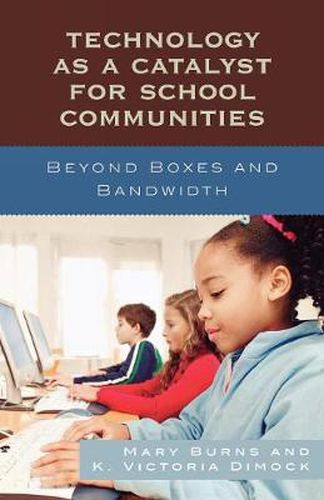Readings Newsletter
Become a Readings Member to make your shopping experience even easier.
Sign in or sign up for free!
You’re not far away from qualifying for FREE standard shipping within Australia
You’ve qualified for FREE standard shipping within Australia
The cart is loading…






Technology as a Catalyst for School Communities: Beyond Boxes and Bandwidth tells the story of how three disparate schools handle the many challenges of integrating technology into their classrooms. Teachers and administrators alike will share familiar feelings as they watch the professional learning communities progress toward the change that makes an enormous difference in how they teach and learn from each other and their students. This book provides an attainable approach for educators to create their own communities of practice for the purposes of school improvement. The case studies illustrate how administrators and teachers work together to find solutions to the best ways to integrate technology in the classroom. In the process, through their collaborative work, they discover that they learned much more than the technical skills they first thought would be the focus of their common inquiry. In creating their communities of practice, the isolation of the classroom is removed, new ways of thinking and doing are embraced, and they learn how to learn again. As the teachers reach out to their peers and students, giving and receiving support in a cooperative learning endeavor, a new enthusiasm permeates their schools.
$9.00 standard shipping within Australia
FREE standard shipping within Australia for orders over $100.00
Express & International shipping calculated at checkout
Stock availability can be subject to change without notice. We recommend calling the shop or contacting our online team to check availability of low stock items. Please see our Shopping Online page for more details.
Technology as a Catalyst for School Communities: Beyond Boxes and Bandwidth tells the story of how three disparate schools handle the many challenges of integrating technology into their classrooms. Teachers and administrators alike will share familiar feelings as they watch the professional learning communities progress toward the change that makes an enormous difference in how they teach and learn from each other and their students. This book provides an attainable approach for educators to create their own communities of practice for the purposes of school improvement. The case studies illustrate how administrators and teachers work together to find solutions to the best ways to integrate technology in the classroom. In the process, through their collaborative work, they discover that they learned much more than the technical skills they first thought would be the focus of their common inquiry. In creating their communities of practice, the isolation of the classroom is removed, new ways of thinking and doing are embraced, and they learn how to learn again. As the teachers reach out to their peers and students, giving and receiving support in a cooperative learning endeavor, a new enthusiasm permeates their schools.